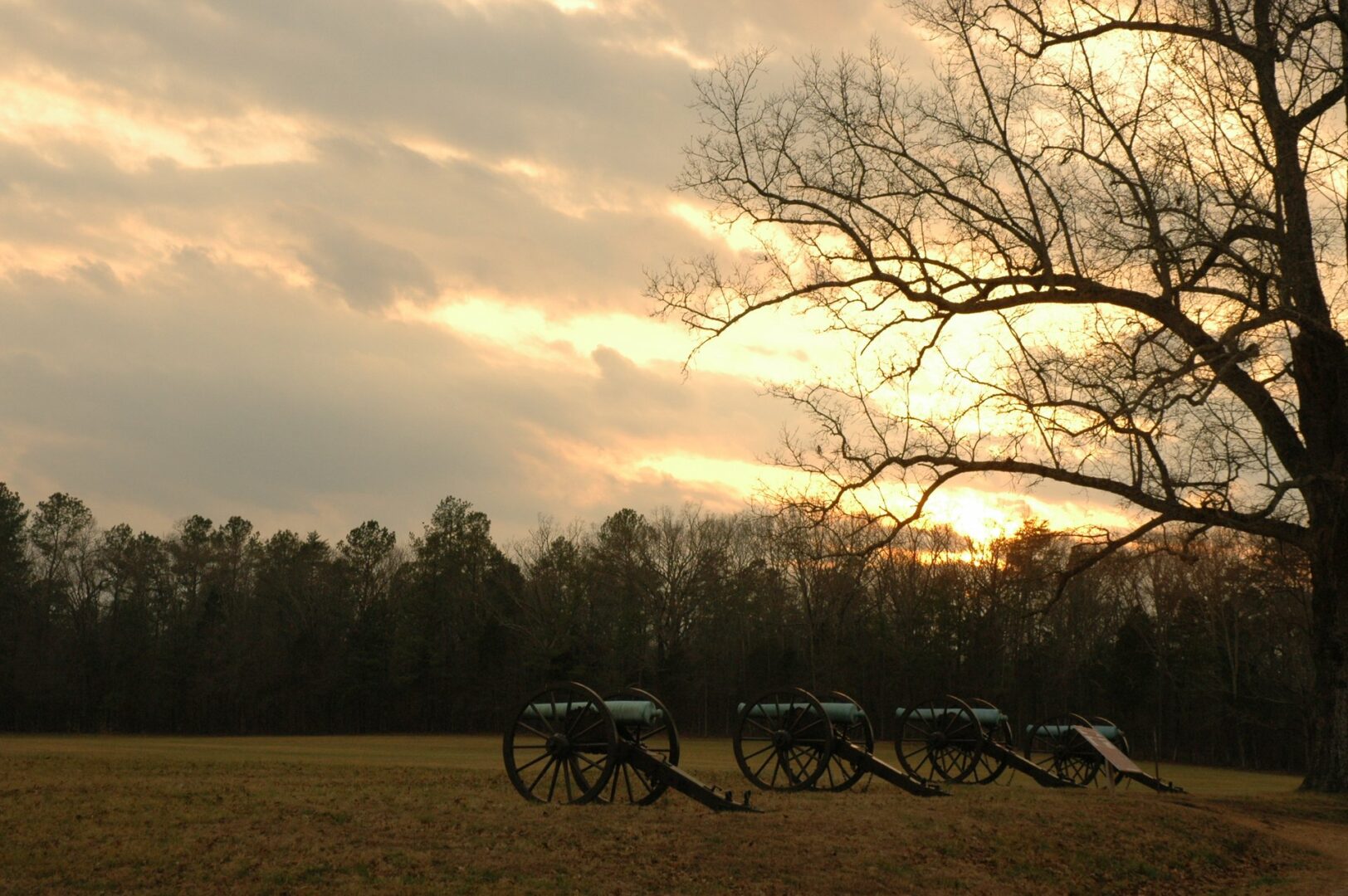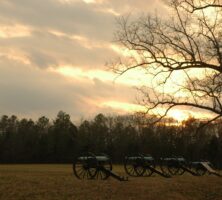Chickamauga, in Walker County, is historically significant for its importance to the Cherokee Nation and for the bloody Battle of Chickamauga that nearly changed the course of the Civil War (1861-65).
The city was incorporated in 1891 and since the early 1900s has been a textile-mill town. Nestled near the foot of Lookout Mountain about ten miles below the Georgia-Tennessee state line, Chickamauga is also a bedroom community for Chattanooga, Tennessee, and a tourist attraction. In an effort to attract visitors, business owners agreed to a makeover of the town’s façade in the early 1970s.
Early History
The town is named for the area’s original occupants—Native Americans known as the Tsikamagi Cherokee. (“Chickamauga” is a phonetic spelling and pronunciation of “Tsikamagi.”) The Tsikamagi settled in an area known as Crawfish Springs, which was named after Chief Crayfish of the Cherokee Nation. Five hundred Tsikamagi fought with General Andrew Jackson’s soldiers against the Red Stick Creek Indians at the Battle of Horseshoe Bend (March 27, 1814) in Alabama. In 1820 the Tsikamagi built the first courthouse in Walker County, but they were forced to leave the area in 1838 as part of the infamous Trail of Tears.
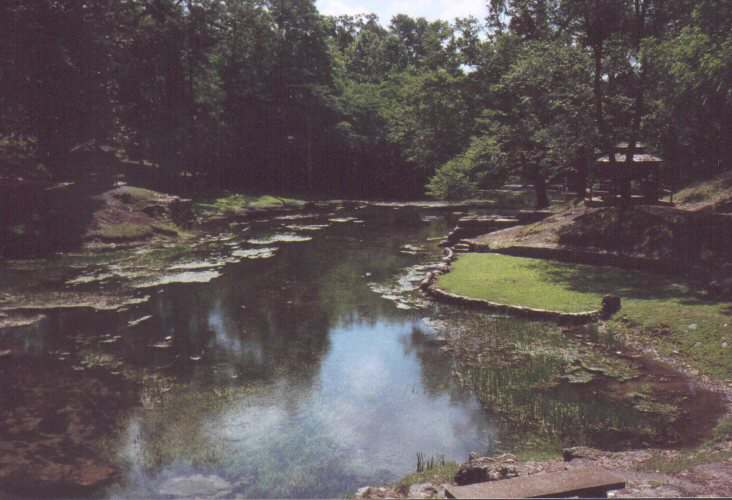
Courtesy of City of Chickamauga
The Lee and Gordon families greatly influenced Chickamauga’s post-Cherokee history. In 1836 Gwinnett County native James Gordon established a plantation at Crawfish Springs and built a gristmill two miles east of town on Chickamauga Creek. Lee and Gordon’s Mill, which contained the area’s first general store, was situated near a blacksmith shop and stagecoach stop. From 1840 to 1847 Gordon built his Doric-columned brick house (known today as the Gordon-Lee mansion), which overlooks Crawfish Springs.
Civil War
The Battle of Chickamauga, fought September 18-20, 1863, involved more than 128,000 Confederate and Union soldiers. With 34,000 casualties, it was the second bloodiest battle of the Civil War; it was also the South’s most decisive victory. In 1890 much of the battlefield was established as the nation’s largest national military park. Upon Chickamauga’s incorporation as a city, the north-south streets were named after Confederate and Union generals, including Robert E. Lee, James Longstreet, John B. Hood, and Thomas T. Crittenden.
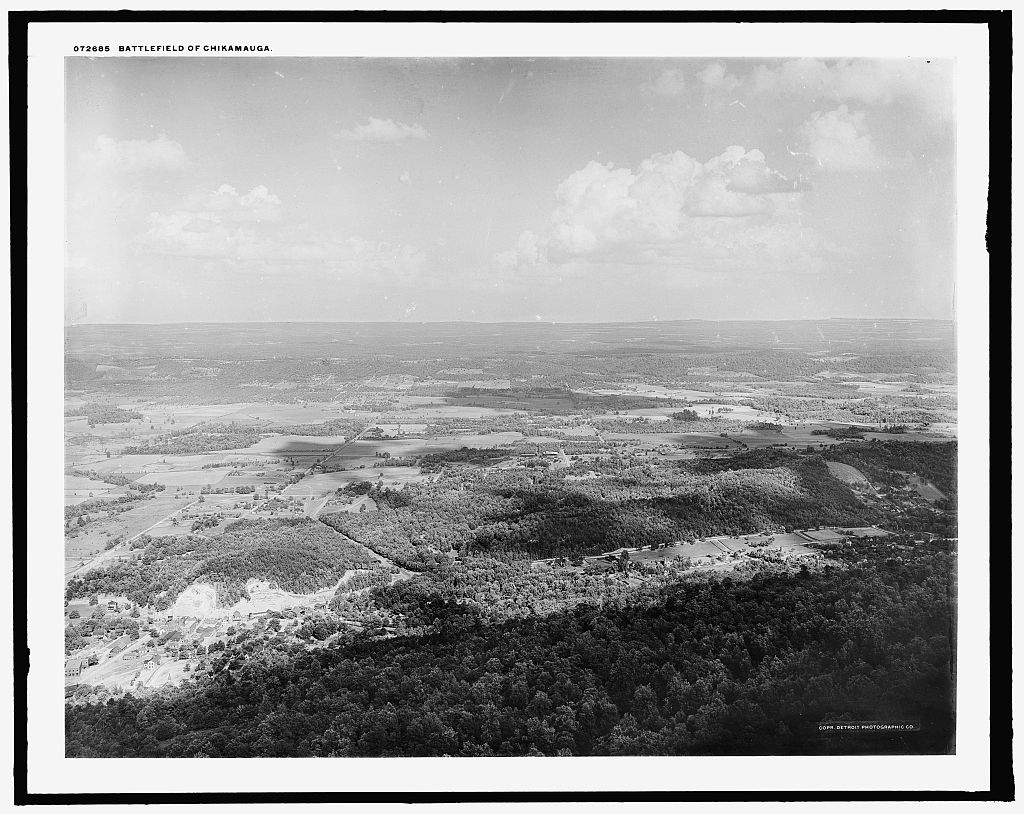
Courtesy of Library of Congress, Prints and Photographs Division
On September 9-10, 1863, just prior to the Battle of Chickamauga, Confederate General Braxton Bragg used Lee and Gordon’s Mill as his headquarters. The mill was taken and retaken several times by both the Union and Confederate armies. In 1867 the mill was destroyed by fire. A replacement structure, owned and operated by various parties, remained in operation until 1967. The facilities later fell into disrepair, but in 1993 former mayor Frank Pierce bought and restored Lee and Gordon’s Mill.
Education and Economy
Gordon Lee served in the U.S. House of Representatives from 1905 to 1927 and is considered to be the father of education in Chickamauga. Upon his death in 1927, Lee left $250,000 and fifteen acres for a new high school. Previously, post–Civil War education in Chickamauga had been limited to a simple log cabin near the Lee home. Today the Gordon Lee Memorial High School is one of the more highly rated academic institutions in Georgia.
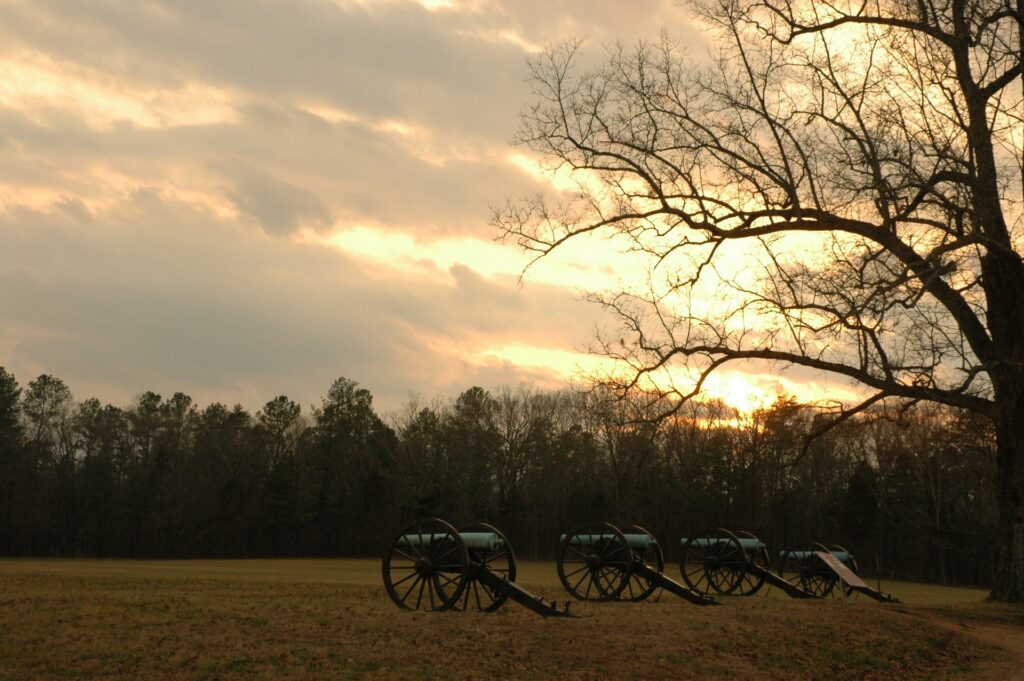
Courtesy of Explore Georgia.
In 1888 the first railroad was built through Crawfish Springs. A syndicate bought the land and used some of it to develop a summer resort, complete with the Park Hotel, which opened in 1891. Around this same time, the Central of Georgia Railway built a stone depot for visitors to the hotel, and both the tracks and depot remain today. After passenger service ceased in the 1950s, the city schools, library system, and recreation department used the depot, which now houses the Walker County Regional Heritage and Model Train Museum. Occasional tourist train excursions stop at the Chickamauga depot.
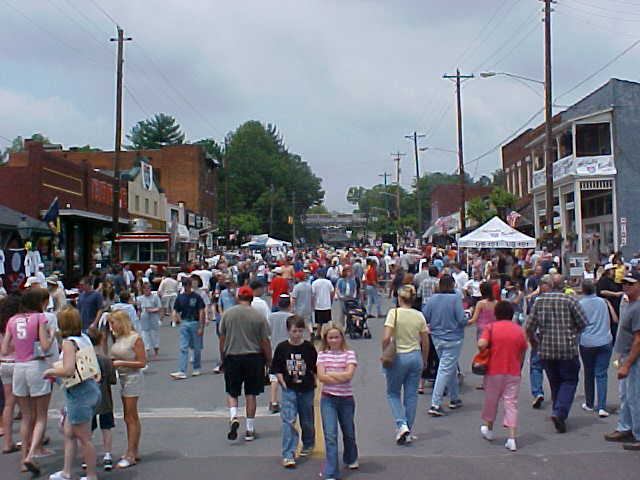
Courtesy of City of Chickamauga
The Durham Iron and Coal Company used coke ovens on Chickamauga’s north side to transform coal into coke for iron and steel foundries in Chattanooga. Beginning in 1891, coal was transported by train twice daily from Lookout Mountain to Chickamauga. Production peaked in 1904 at about 700 to 1,000 tons of coal per day and ended during the Great Depression. The coke ovens were restored in the 1990s for exhibition.
Since the early 1900s Chickamauga has been a textile-mill town. New England native Daniel Ashley Jewell, who had moved to middle Georgia prior to the Civil War, purchased land in Chickamauga in 1907, and he and a consortium built the Crystal Springs Bleachery Company in 1909 and a cotton mill in 1914. Jewell liked the location because of the abundant water supplied by Crawfish Springs. The mill remains in operation today.
According to the 2020 U.S. census, the population was 2,917, only a slight decrease from the 2010 population of 3,101. Chickamauga has a city school system, a library, a visitors’ center, recreation facilities, and a variety of merchants and eateries. Annual festivals include the Down Home Days celebration in May, and the War Between the States Day and the Arts and Crafts Festival in September.





